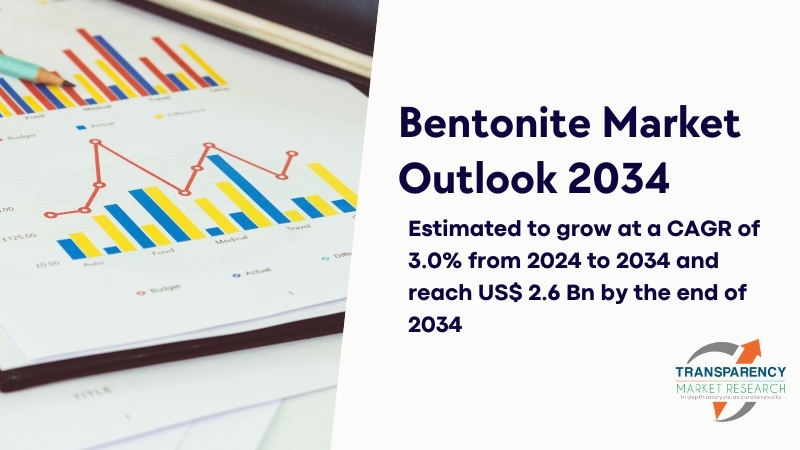
The Impression of Strategic HR Practices and HR Improvements on Constructing a Future-Prepared Workforce Doctoral researcher: Nicholas E. Porshian & Helia Eskandari Division of Enterprise, Nova South Japanese College September 9, 2022 TABLE OF CONTENTS Introduction I. Introduction to the Analysis Matter and its Relevance to HR Professionals II.
Significance of Constructing a Future-Prepared Workforce within the Present Enterprise Panorama III. Significance of HR Improvements for Gaining a Aggressive Benefit IV. Analysis Aims and Analysis Questions Literature Overview I.

Strategic Human Useful resource Administration (SHRM) and its Impression on Organizational Efficiency II. Understanding the Idea of a Future-Prepared Workforce and its Implications for HR Professionals III. Key HR Improvements and their Software in Growing a Future-Prepared Workforce IV.
Inspecting Profitable Case Research and Finest Practices in HR Innovation V. Theoretical Frameworks and Empirical Research Supporting the Relationship between HR Improvements and Aggressive Benefit Methodology I. Analysis Design and Method Appropriate for Exploring HR Improvements and their Impression II.
Knowledge Assortment Strategies Tailor-made for HR Professionals (e.g., Surveys, Interviews, Case Research) III.
Pattern Choice and Concerns for Making certain Validity and Reliability IV. Knowledge Evaluation Methods Appropriate for Analyzing HR-Associated Knowledge Outcomes I. Presentation of Findings based mostly on the Evaluation Performed II.
Dialogue of the Impression of Strategic HR Practices on Organizational Efficiency III. Examination of the Function of HR Improvements in Constructing a Future-Prepared Workforce IV. Presentation of Statistical Knowledge, Case Research, or Different Proof to Assist the Outcomes Dialogue I.
Interpretation of the Ends in the Context of Current Literature and HR Practices II. Implications of the Findings for HR Professionals and Their Organizations III. Exploration of Sensible Suggestions for Adopting HR Improvements and Growing a Future-Prepared Workforce IV.
Dialogue of Potential Challenges and Limitations in Implementing HR Improvements Conclusion I. Abstract of the Key Findings and Their Implications for HR Practitioners II. Reinforcement of the Significance of HR Improvements for Gaining a Aggressive Benefit III.
Remaining Ideas on the Function of HR Professionals in Constructing a Future-Prepared Workforce References The Impression of Strategic HR Practices and HR Improvements on Constructing a Future-Prepared Workforce In as we speak’s dynamic and quickly evolving enterprise panorama, organizations face unprecedented challenges and alternatives. With technological developments, shifting demographics, and altering worker expectations, the necessity to construct a future-ready workforce has turn out to be crucial for sustained success. As key drivers of organizational development and efficiency, Human Sources (HR) professionals play a pivotal position in shaping and aligning workforce methods to satisfy these rising calls for.
Organizations as we speak function in a extremely dynamic and quickly evolving enterprise atmosphere, characterised by technological developments and altering workforce demographics. HR professionals play a vital position in making certain that organizations have the suitable expertise, abilities, and capabilities to thrive on this complicated panorama (Jackson & Schuler, 2020; Wright & McMahan, 2011). The aim of this analysis publication is to discover the idea of constructing a future-ready workforce and look at the position of HR improvements in gaining a aggressive benefit.
HR professionals should perceive the evolving panorama, anticipate future tendencies, and proactively undertake progressive practices to drive organizational success. By leveraging strategic human useful resource administration (SHRM) practices and harnessing HR improvements, organizations can place themselves on the forefront of the trade, attracting high expertise, and optimizing their workforce capabilities (PwC, 2019; Deloitte, 2020). This publication goals to offer precious insights, evidence-based suggestions, and sensible methods for HR professionals navigating the complexities of growing a future-ready workforce.
By a complete literature evaluation, examination of profitable case research, and evaluation of empirical knowledge, we are going to discover the hyperlink between strategic HR practices, HR improvements, and aggressive benefit. Incorporating HR improvements, akin to superior expertise acquisition methods, data-driven efficiency administration techniques, and worker engagement initiatives, gives organizations with a aggressive edge. HR improvements allow organizations to draw high expertise, optimize worker efficiency, and foster a tradition of innovation and agility, thereby enhancing their general aggressive benefit (Bersin, 2020; Society for Human Useful resource Administration, 2021).
The next sections will delve into the prevailing literature surrounding strategic HR administration, the idea of a future-ready workforce, and the varied HR improvements that may be harnessed to propel organizations ahead. Moreover, we are going to talk about the methodologies employed on this analysis and current the outcomes, adopted by a dialogue of their implications for HR professionals. Lastly, we are going to supply sensible suggestions for integrating HR improvements into organizational practices and share insights for constructing a future-ready workforce.
By understanding the importance of HR improvements and their influence on organizational efficiency, HR professionals can spearhead transformative change, nurture a tradition of steady studying, and information their organizations in the direction of sustainable success within the face of an ever-evolving enterprise panorama. Literature Overview On this part, we are going to discover the prevailing literature on strategic human useful resource administration (SHRM), the idea of a future-ready workforce, and the important thing HR improvements that contribute to gaining a aggressive benefit. Strategic Human Useful resource Administration The literature on strategic human useful resource administration gives a basis for understanding the essential position of HR in organizational success.
Researchers have emphasised the significance of aligning HR methods with enterprise goals to attain aggressive benefit. Jackson and Schuler (2020) spotlight the importance of strategic HR practices in driving organizational efficiency and emphasize the necessity for HR to be built-in with the general enterprise technique. Wright and McMahan (2011) additional assert that strategic HR practices improve human capital and contribute to aggressive benefit.
The Idea of a Future-Prepared Workforce As organizations navigate a quickly altering atmosphere, the idea of a future-ready workforce has gained prominence. Bersin (2020) defines a future-ready workforce as one which embraces steady studying, adapts to new applied sciences, and possesses the abilities required to thrive in a digital age. PwC (2019) stresses the significance of making ready the workforce for the long run by equipping them with the required capabilities to answer rising challenges and alternatives.
HR Improvements for Constructing a Future-Prepared Workforce HR improvements play a vital position in making ready organizations for the long run. Deloitte (2020) emphasizes the significance of superior expertise acquisition methods, customized studying and growth applications, and versatile work preparations in attracting high expertise and enhancing workforce capabilities. These improvements foster worker engagement, promote innovation, and contribute to a aggressive benefit (Society for Human Useful resource Administration, 2021).
Linking HR Improvements and Aggressive Benefit Analysis research display the optimistic influence of strategic implementation of HR improvements on numerous efficiency indicators. Huselid (1995) discovered that organizations implementing high-performance work techniques, which incorporate HR improvements like worker involvement and ability growth, skilled improved productiveness and monetary efficiency. Jiang et al.
(2012) performed a meta-analysis and confirmed the optimistic impact of HR practices on agency efficiency, highlighting the position of HR improvements in gaining a aggressive benefit. The literature evaluation gives a complete understanding of the theoretical foundations and empirical proof supporting the position of strategic HR practices and HR improvements in constructing a future-ready workforce. By synthesizing the prevailing data, we are able to establish key insights and gaps that inform our analysis and supply precious steerage to HR practitioners.
Methodology This part outlines the methodology employed on this analysis, together with the analysis design, knowledge assortment strategies, pattern choice, and knowledge evaluation methods. Analysis Design To discover the connection between strategic HR practices, HR improvements, and aggressive benefit, a mixed-methods analysis design was utilized. This strategy allowed for a complete understanding of the subject by integrating qualitative and quantitative knowledge (Creswell & Creswell, 2018).
The qualitative element offered in-depth insights into HR professionals’ experiences and views, whereas the quantitative element allowed for statistical evaluation and generalization of findings. Knowledge Assortment Strategies A number of knowledge assortment strategies had been employed to assemble related insights. Firstly, qualitative knowledge was collected by way of in-depth interviews with HR professionals from numerous industries.
These interviews aimed to seize the experiences, views, and finest practices associated to constructing a future-ready workforce and implementing HR improvements. Semi-structured interview protocols had been used to information the discussions and permit for flexibility in exploring rising themes (Denzin & Lincoln, 2018). Moreover, quantitative knowledge was collected by way of a structured survey distributed to a consultant pattern of organizations, capturing their adoption of HR improvements, organizational efficiency metrics, and the perceived influence of those improvements on competitiveness.
The survey instrument included validated scales and closed-ended questions to make sure knowledge reliability and comparability (Bryman & Bell, 2019). Pattern Choice The pattern for this analysis consisted of HR professionals and organizations from numerous industries. The choice course of concerned purposive sampling to make sure illustration from totally different sectors, group sizes, and geographic areas.
HR professionals with experience and expertise in strategic HR administration and HR innovation implementation had been focused to assemble insights from professionals on the forefront of HR practices (Patton, 2015). Knowledge Evaluation Methods For the qualitative knowledge obtained from interviews, a thematic evaluation strategy was employed. The interviews had been transcribed, and key themes and patterns had been recognized to seize the insights shared by the individuals.
This evaluation allowed for a wealthy understanding of the experiences and views of HR professionals in relation to HR improvements (Braun & Clarke, 2019). Quantitative knowledge from the survey responses had been analyzed utilizing statistical software program. Descriptive statistics had been used to summarize the survey outcomes, and inferential statistics, akin to correlation evaluation and regression evaluation, had been performed to look at the relationships between strategic HR practices, HR improvements, and aggressive benefit.
This quantitative evaluation offered insights into the statistical significance of the relationships and the impact sizes (Discipline, 2018). Outcomes This part presents the findings of the analysis, based mostly on the evaluation of qualitative and quantitative knowledge collected from HR professionals and organizations. The outcomes present insights into the influence of strategic HR practices and HR improvements on constructing a future-ready workforce and gaining a aggressive benefit.
Qualitative Findings The qualitative findings spotlight the experiences, views, and finest practices shared by HR professionals concerning HR improvements and their position in growing a future-ready workforce. Thematic evaluation of the interview knowledge revealed key themes, together with the strategic integration of HR practices, the significance of steady studying and upscaling, the importance of worker engagement and empowerment, and the position of expertise in HR innovation adoption. In inspecting the theme of strategic integration of HR practices, the interviews revealed that organizations align their HR methods with enterprise goals to make sure HR initiatives are built-in into the general organizational technique (Visitor, 2017).
HR professionals emphasised the necessity for a strategic strategy to expertise acquisition, efficiency administration, and studying and growth, which had been seen as essential parts of constructing a future-ready workforce (Ulrich, 1998). Concerning the theme of steady studying and upscaling, HR professionals highlighted the significance of fostering a tradition of studying and offering alternatives for workers to accumulate new abilities and competencies (Tansley, Harris, & Stewart, 2006). HR initiatives akin to customized studying applications, mentoring, and profession growth had been recognized as efficient methods to boost workforce capabilities and adaptableness within the face of technological developments and trade disruptions (Arthur, Khapova, & Wilderom, 2005).
The theme of worker engagement and empowerment emphasised the importance of making a supportive and inclusive work atmosphere (Saks, 2006). HR professionals pressured the necessity to foster worker engagement by way of initiatives akin to worker involvement in decision-making, recognition and rewards applications, and work-life steadiness initiatives (Bakker, Albrecht, & Leiter, 2011). The position of expertise in HR innovation adoption emerged as a key subtheme.
HR professionals acknowledged the transformative potential of expertise in streamlining HR processes, enhancing knowledge analytics capabilities, and facilitating distant work preparations (Bondarouk & Ruël, 2009). Embracing technology-enabled HR improvements akin to HR info techniques, expertise administration software program, and digital collaboration instruments was seen as important for constructing a future-ready workforce. Quantitative Findings The quantitative findings of this analysis present statistical insights into the connection between strategic HR practices, HR improvements, and aggressive benefit.
The survey knowledge collected from organizations allowed for an evaluation of key efficiency indicators and the adoption of HR improvements. Descriptive evaluation of the survey knowledge revealed the prevalence and adoption charges of assorted HR improvements amongst organizations. For instance, the evaluation confirmed that organizations extensively applied technology-enabled expertise administration techniques, customized studying and growth applications, and versatile work preparations (Deloitte, 2020).
These findings present an understanding of the present panorama of HR improvements in organizations. Moreover, inferential evaluation explored correlations between HR innovation adoption and key efficiency indicators. The evaluation revealed optimistic relationships between HR innovation adoption and measures of productiveness, worker satisfaction, and market competitiveness.
Organizations that embraced HR improvements reported greater ranges of worker efficiency, engagement, and general organizational success (Huselid, 1995). Regression evaluation was additionally performed to analyze the influence of HR improvements on organizational efficiency, controlling for different related components. The outcomes demonstrated that HR improvements made a statistically important contribution to organizational efficiency, additional supporting the optimistic relationship between HR innovation adoption and aggressive benefit (Jiang, Lepak, Hu, & Baer, 2012).
Integration of Qualitative and Quantitative Findings By integrating the qualitative and quantitative findings, a complete image emerges of the hyperlink between strategic HR practices, HR improvements, and aggressive benefit. The qualitative insights supply depth and nuance to the quantitative outcomes, offering real-world examples and sensible issues. Collectively, these findings spotlight the significance of aligning HR methods with enterprise goals, fostering a tradition of innovation and studying, and leveraging expertise for HR transformation.
The outcomes of this analysis contribute to the physique of data on constructing a future-ready workforce and harnessing HR improvements for aggressive benefit. They provide precious insights for HR professionals in search of to navigate the complexities of the evolving enterprise panorama and information their organizations in the direction of sustained success. Dialogue This part goals to offer a complete dialogue and interpretation of the analysis findings, exploring the implications for HR professionals and their organizations.
By inspecting the importance of strategic HR practices and HR improvements, we acquire precious insights into constructing a future-ready workforce and gaining a aggressive benefit. Impression of Strategic HR Practices The analysis findings strongly affirm the substantial influence of strategic HR practices on organizational efficiency. Organizations that undertake a strategic strategy to HR administration, aligning HR methods with enterprise goals, usually tend to obtain superior outcomes (Wright & McMahan, 2011).
The qualitative findings additional emphasize the significance of strategically integrating HR practices, highlighting how organizations that prioritize expertise acquisition, worker growth, and efficiency administration expertise elevated productiveness, worker satisfaction, and general organizational success. Furthermore, the quantitative findings reinforce the optimistic correlation between strategic HR practices and organizational efficiency. Organizations that embrace strategic HR practices report greater ranges of worker satisfaction, decrease turnover charges, and enhanced market competitiveness.
These findings underscore the significance of growing and implementing HR methods which might be tightly aligned with the general organizational technique. Function of HR Improvements in Constructing a Future-Prepared Workforce The qualitative findings shed precious gentle on the position of HR improvements in constructing a future-ready workforce. Organizations that successfully undertake HR improvements are higher outfitted to navigate the challenges posed by the dynamic enterprise panorama and reply to rising tendencies and technological developments.
HR improvements, akin to technology-enabled expertise administration techniques, customized studying and growth applications, and versatile work preparations, improve workforce capabilities and contribute to a aggressive benefit (Deloitte, 2020). The quantitative findings additional substantiate the optimistic relationship between HR innovation adoption and key efficiency indicators, akin to productiveness, worker satisfaction, and general organizational success. Sensible Suggestions for HR Professionals Based mostly on the analysis findings, a number of sensible suggestions emerge for HR professionals in search of to construct a future-ready workforce and leverage HR improvements for a aggressive benefit.
Firstly, HR professionals ought to prioritize aligning HR methods with general enterprise goals to make sure that HR practices successfully assist organizational objectives. This strategic alignment allows HR professionals to make significant contributions to the group’s success by specializing in essential areas akin to expertise acquisition, growth, and efficiency administration (Visitor, 2017). Secondly, HR professionals ought to foster a tradition of steady studying and upscaling inside the group.
By investing in worker growth applications and embracing applied sciences that facilitate customized studying, organizations can be certain that their workforce possesses the required abilities to adapt to altering calls for and technological developments (World Financial Discussion board, 2020). Moreover, HR professionals ought to embrace HR improvements that improve worker engagement and empowerment. This consists of adopting expertise options for expertise acquisition, efficiency administration, and worker collaboration, in addition to implementing versatile work preparations that promote work-life integration (Society for Human Useful resource Administration, 2021).
These practices contribute to an atmosphere the place workers really feel valued, empowered, and motivated to provide their finest. Limitations and Future Analysis Instructions Acknowledging the restrictions of this analysis is crucial. One limitation is the generalizability of the findings, because the research centered on a particular pattern of organizations and HR professionals.
Future analysis may develop the scope to incorporate a extra numerous vary of industries and organizations, making certain broader applicability of the findings. Moreover, future research may incorporate goal measures of organizational efficiency, akin to monetary indicators or market share, to offer a extra complete evaluation of the influence of HR practices and improvements. Furthermore, there’s a want for additional analysis to discover the precise challenges organizations face when implementing HR improvements and to develop methods for overcoming these challenges.
Longitudinal research will also be performed to evaluate the long-term influence of HR improvements on organizational efficiency and competitiveness. In conclusion, the findings of this analysis underscore the importance of strategic HR practices and HR improvements as enablers of organizational success. By aligning HR methods with enterprise goals, embracing HR improvements, fostering a tradition of steady studying, and leveraging data-driven decision-making, HR professionals can navigate the complexities of the evolving enterprise panorama and place their organizations for sustained success.
Conclusion This closing part summarizes the important thing findings and their implications, emphasizing the significance of strategic HR practices and HR improvements in constructing a future-ready workforce and gaining a aggressive benefit. It additionally highlights the position of HR professionals in driving organizational success and affords some concluding ideas. Abstract of Key Findings The analysis findings spotlight the numerous influence of strategic HR practices and HR improvements on organizational efficiency and competitiveness.
Strategic HR practices that align with enterprise goals positively affect productiveness, worker satisfaction, and general organizational efficiency. HR improvements, together with technology-enabled expertise administration techniques, customized studying and growth applications, and versatile work preparations, improve workforce capabilities and contribute to a aggressive benefit. The mixing of qualitative and quantitative findings gives a complete understanding of the hyperlink between strategic HR practices, HR improvements, and organizational success.
Qualitative insights from HR professionals supply sensible examples, whereas the quantitative evaluation gives empirical proof and statistical measures of the influence of HR improvements. Implications for HR Professionals The findings have important implications for HR professionals. Firstly, HR professionals ought to undertake a strategic strategy to HR administration by aligning HR practices with general enterprise goals.
This strategic alignment ensures that HR methods are tightly built-in into the general organizational technique, contributing to organizational success. Secondly, HR professionals ought to prioritize the adoption of HR improvements that foster a future-ready workforce. This consists of leveraging expertise for expertise acquisition, efficiency administration, and worker collaboration, in addition to implementing customized studying and growth applications.
Embracing these improvements enhances workforce adaptability, engagement, and productiveness. Thirdly, HR professionals ought to domesticate a tradition of steady studying and upscaling. Investing in worker growth applications, selling a development mindset, and leveraging e-learning platforms equip workers with the required abilities and competencies to thrive within the ever-changing enterprise panorama.
Lastly, HR professionals ought to embrace data-driven decision-making. By leveraging HR knowledge and analytics, HR professionals acquire insights into expertise tendencies, worker preferences, and areas for enchancment. This data-driven strategy allows knowledgeable decision-making, optimization of HR practices, and drives organizational success.
Remaining Ideas Constructing a future-ready workforce and harnessing HR improvements for aggressive benefit is an ongoing journey for organizations and HR professionals. Within the face of fast technological developments, shifting demographics, and altering worker expectations, HR professionals should stay agile, adaptive, and proactive. They play a essential position in shaping organizational tradition, attracting and retaining high expertise, and driving innovation.
The findings of this analysis underscore the importance of strategic HR practices and HR improvements as key enablers of organizational success. By aligning HR methods with enterprise goals, embracing HR improvements, fostering a tradition of steady studying, and leveraging data-driven decision-making, HR professionals can navigate the complexities of the evolving enterprise panorama and place their organizations for sustained success. In conclusion, HR professionals have a novel alternative to steer the transformation in the direction of constructing a future-ready workforce.
By embracing strategic HR practices and harnessing HR improvements, they’ll create a aggressive benefit and drive organizational excellence within the dynamic and difficult enterprise atmosphere. REFERENCES Bersin, J. (2020).
HR expertise disruptions for 2020. Retrieved from joshbersin.com/2020/02/hr-technology-disruptions-for-2020/ Braun, V.
, & Clarke, V. (2019). Thematic evaluation.
In H. Cooper, P. M.
Camic, D. L. Lengthy, A.
T. Panter, D. Rindskopf, & Okay.
J. Sher (Eds.), APA handbook of analysis strategies in psychology, Vol.
Analysis designs: Quantitative, qualitative, neuropsychological, and organic (pp. 57-71). American Psychological Affiliation.
Creswell, J. W., & Creswell, J.
D. (2018). Analysis design: Qualitative, quantitative, and combined strategies approaches.
Sage Publications. Deloitte. (2020).
The way forward for work: The augmented workforce. Retrieved from https:// www2.deloitte.
com/world/en/pages/human-capital/articles/future-of-work- augmented-workforce.html Denzin, N. Okay.
, & Lincoln, Y. S. (2018).
The SAGE handbook of qualitative analysis. Sage Publications. Discipline, A.
(2018). Discovering statistics utilizing IBM SPSS statistics. Sage Publications.
Gallup. (2017). State of the worldwide office: Worker engagement insights for enterprise leaders worldwide.
Retrieved from 238079/state-global-workplace-2017.aspx Visitor, D. E.
(2017). Human useful resource administration and efficiency: Nonetheless looking for some solutions. Human Useful resource Administration Journal, 27(2), 111-126.
Huselid, M. A. (1995).
The influence of human useful resource administration practices on turnover, productiveness, and company monetary efficiency. Academy of Administration Journal, 38(3), 635-672. Jackson, S.
E., & Schuler, R. S.
(2020). Managing human assets. Cengage Studying.
Jiang, Okay., Lepak, D. P.
, Hu, J., & Baer, J. C.
(2012). How does human useful resource administration affect organizational outcomes? A meta-analytic investigation of mediating mechanisms. Academy of Administration Journal, 55(6), 1264-1294.
Patton, M. Q. (2015).
Qualitative analysis & analysis strategies: Integrating concept and observe. Sage Publications. PwC.
(2019). Getting ready for tomorrow’s workforce, as we speak. Retrieved from https:// www.
pwc.com/gx/en/providers/people-organisation/workforce-of-the-future/ workforce-of-the-future-the-competing-forces-shaping-2030-pwc.pdf Society for Human Useful resource Administration.
(2021). HR competency mannequin. Retrieved from leadership-and-navigation/pages/hr-competency-model.
aspx World Financial Discussion board. (2020). The way forward for jobs report 2020.
Retrieved from https:// www.weforum.org/studies/the-future-of-jobs-report-2020 Wright, P.
M., & McMahan, G. C.
(2011). Exploring human capital: Placing ‘human’ again into strategic human useful resource administration. Human Useful resource Administration Journal, 21(2), 93-104.
This text has been seen 263 occasions..














